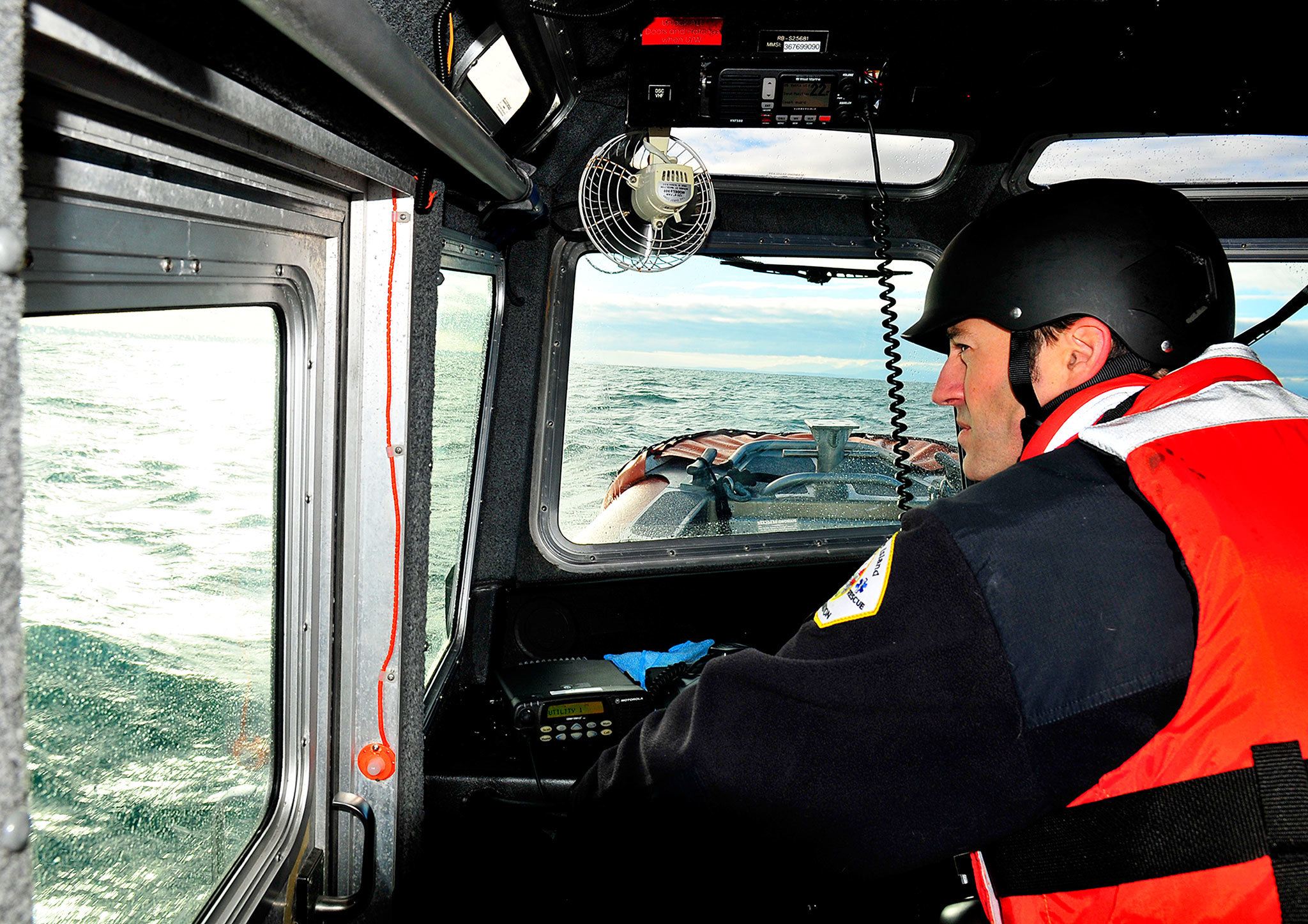As the number of water rescue calls continue to rise, so does their need for more boats and training to rescue people.
To improve their rescue skills, North and Central Whidbey fire units joined forces with the U.S. Coast Guard and Navy Search and Rescue in a multi-agency search-and-rescue drill Tuesday in the frigid waters of Rosario Strait, west of Deception Pass.
Nothing short of realistic and fairly common, the exercise was designed to enhance teamwork, proficiency and agency interoperability, said Jim O’Connor, a captain with North Whidbey Fire and Rescue.
Island County fire departments responded to 89 marine rescue calls this year, he said.
“The whole marine rescue in Island County is something that I think has been neglected over the years because people just don’t understand how many calls we get, and the call volume is going up,” O’Connor said.
In Tuesday’s rescue scenario, which was a boat sinking west of Deception Pass, the incident was first reported at 8:55 a.m. by dispatchers as a dropped 911 call. After that, no other information, including GPS positional information, was available from the boat. Calls returned from a dispatcher went to voice mail. At 9 a.m., a boater near Smith Island used a marine VHF radio to report that a flare was spotted.
With little other information to go on, Whidbey marine rescue units cast off from Cornet Bay on North Whidbey and a dock adjacent to the state ferry landing in Coupeville. Both units converged to assigned areas and began combing the waters with help from Coast Guard and Navy rescue helicopters.
The crew from Central Whidbey Fire & Rescue located the exercise’s “survivor” and pulled the dummy from the water.
To increase the realism of the rescue scenario, that survivor had been dropped into the water by the Coast Guard at about the time simulated 911 call was made.
Central Whidbey Fire & Rescue Capt. Jerry Helm said the survivor was found in their search pattern.
“This type of training is so important for our crew,” Helm said. “Central Whidbey gets a lot more marine rescue calls than fire calls.”
Until a few years ago the joint training and interoperability really didn’t exist, O’Connor added.
“For the first time in history, two years ago, all the Island County fire department’s marine programs got together and said we have to start working together,” said O’Connor. “Everything we are gonna do, we are gonna do together.”
That includes the training academies as well, he said.
“If a boat from Central Whidbey goes into the water, North Whidbey does too, just in case extra support is needed, it is ready to go,” O’Connor said.
A Navy sailor died two years in Crescent Harbor — rescuers could have used 10 boats at that time, he said.
The sailor’s body was recovered a month later.
Working with the Navy and Coast Guard is an important part of condcuting water rescues because of their increased capabilities, O’Connor said.
“We have resources available to us from the federal government that all we have to do is ask for,” he said. “The Coast Guard can generate search patterns that we just don’t have the capability to do.”
Some of the challenges to working in a joint environment is communication, he said, but added there now is a working relationship with all the agencies that has never existed before.



